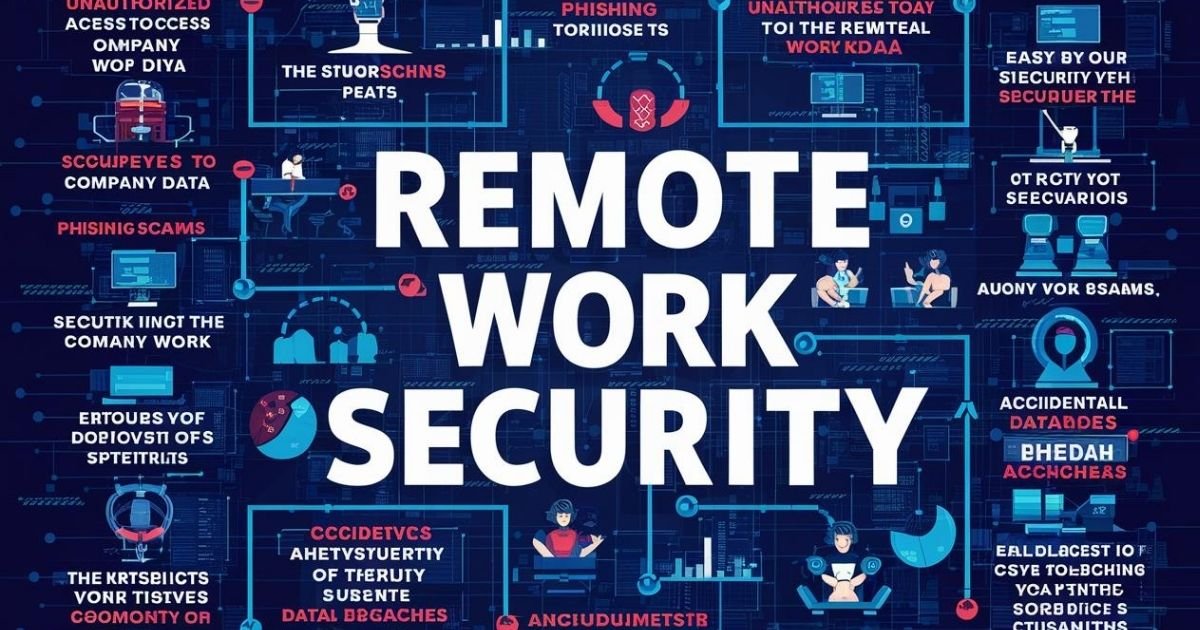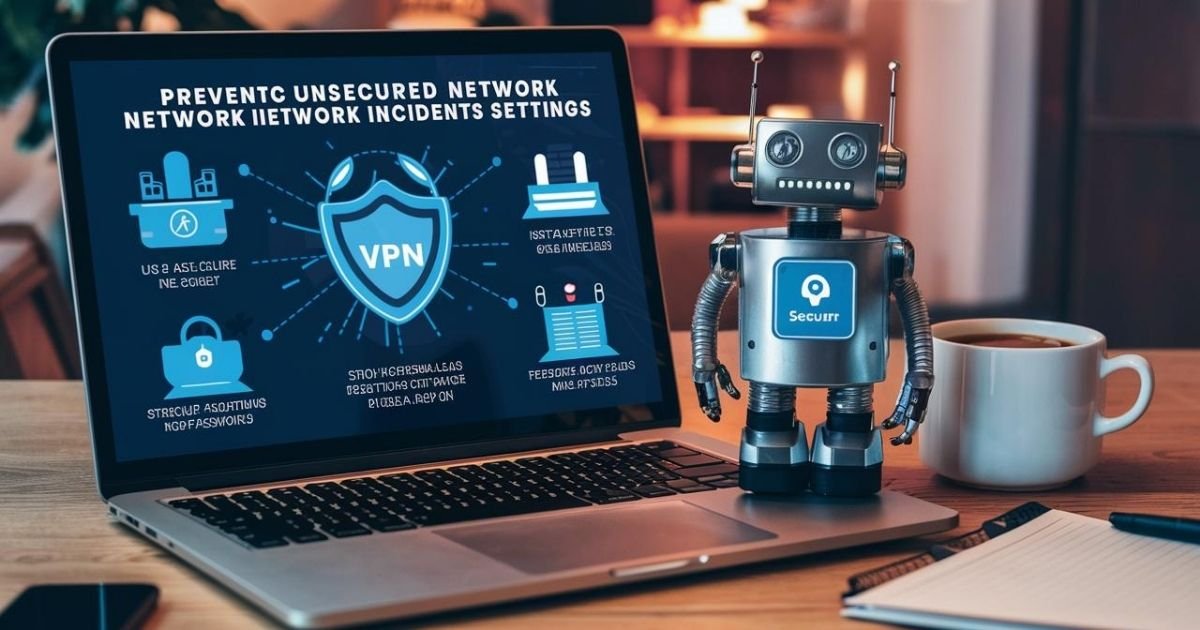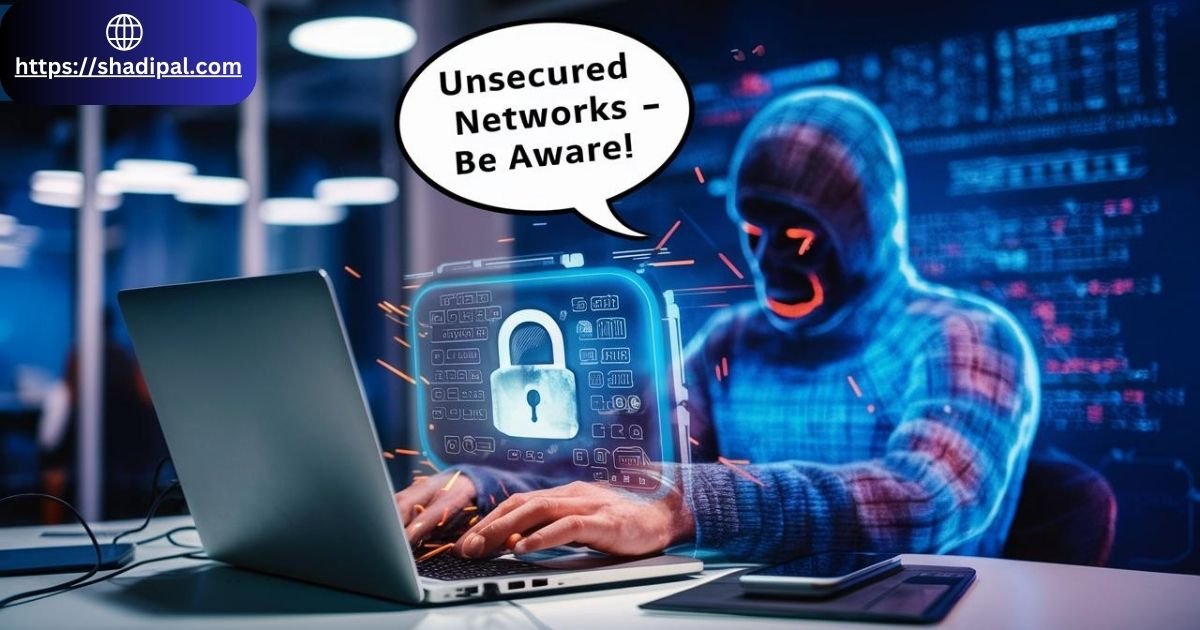Unsecured Network Remote Work Incidents: Understanding the Risks and Impacts
Over the past few years, the world of work has undergone a seismic shift. The global pandemic has accelerated the rise of remote work, changing how businesses run and how employees carry out their duties. While remote work offers numerous benefits, including flexibility, increased productivity, and cost savings, it also presents new challenges, particularly concerning cybersecurity. Among the most pressing issues is the unsecured network remote work incident—a growing concern that can have severe consequences for businesses, employees, and customers alike.
In this article, we will delve into the risks associated with unsecured networks during remote work, explore the potential consequences of security breaches, and discuss best practices to prevent such incidents. Understanding these elements is crucial for any organization that wants to protect its sensitive information and maintain the trust of its stakeholders.
1. The rise of remote work and its implications for cybersecurity
The shift to remote work has brought about many changes in how businesses operate, but it has also significantly expanded the attack surface for cybercriminals. Employees working from home or other remote locations often rely on personal devices and unsecured networks, which can be much more vulnerable to attacks than the secured corporate environments they used to work in.
1.1 The Convenience of Remote Work
Remote work offers undeniable conveniences. Employees can avoid long commutes, work in a more comfortable environment, and often enjoy a better work-life balance. Companies can reduce overhead costs associated with maintaining large office spaces and attract talent from a broader geographic area. However, these benefits come with trade-offs, particularly in the realm of cybersecurity.
1.2 The Threat of Unsecured Networks
An unsecured network remote work incident occurs when a remote worker accesses company resources using a network that lacks adequate security measures. This could be a public Wi-Fi network at a coffee shop, an inadequately secured home network, or any other connection that lacks proper protection. Cybercriminals can exploit these unsecured networks to gain unauthorized access to sensitive company data, leading to data breaches, financial losses, and damage to a company’s reputation.
2. Understanding Unsecured Network Remote Work Incidents
Unsecured network incidents can take many forms, each with its own set of risks and potential consequences. To fully appreciate the dangers of working on an unsecured network, it’s essential to understand how these incidents occur and the types of threats involved.
2.1 How Unsecured Network Incidents Occur
Most unsecured network remote work incidents occur because remote workers inadvertently connect to networks that are vulnerable to cyberattacks. Here are some common scenarios:
- Public Wi-Fi Networks: Since public Wi-Fi networks are frequently unencrypted, cybercriminals are able to intercept data transmitted over these networks. A remote worker using a public Wi-Fi network to access company resources could inadvertently expose sensitive information.
- Insecure Home Networks: Many employees work from home using their personal Wi-Fi networks. Unauthorized access can potentially compromise these networks if they lack strong passwords and encryption.
- Phishing Attacks: Cybercriminals often use phishing attacks to trick remote workers into providing access to secure company networks or revealing their credentials. These attacks are more likely to succeed when employees are not using secure networks.
- Malware and ransomware: Unsecured networks can be a breeding ground for malware and ransomware. An infected remote worker’s device can spread to the company’s network, causing widespread damage.
2.2 Types of Threats in Unsecured Network Incidents
When remote workers use unsecured networks, they expose themselves and their employers to various types of cyber threats. Some of the most common threats are as follows:
- Man-in-the-Middle (MitM) Attacks: In a MitM attack, a cybercriminal intercepts communications between the employee and the company’s network. The attacker can eavesdrop on the conversation, steal data, or inject malicious content.
- Packet Sniffing: This technique involves capturing and analyzing data packets as they travel over a network. Intercepting sensitive information like login credentials, financial data, and confidential business communications is possible on unsecured networks.
- Unauthorized Access: Without proper network security, unauthorized users can gain access to a remote worker’s device or the company’s network. This can lead to data theft, data manipulation, or the installation of malicious software.
- A data breach can occur if a cybercriminal gains access to sensitive company data through an unsecured network. This can have severe financial and reputational consequences for the company.
2.3 Real-World Examples of Unsecured Network Remote Work Incidents

To understand the gravity of these incidents, let’s consider a few real-world examples:
- Example 1: The Target Data Breach: In one of the most infamous data breaches, attackers gained access to Target’s network through an unsecured remote connection. The breach, which occurred during the holiday shopping season, resulted in the theft of credit card information from millions of customers and cost the company over $200 million.
- Example 2: The Remote Work VPN Attack: In 2020, a major financial institution suffered a significant data breach when cybercriminals exploited vulnerabilities in their remote work VPN. The attackers gained access to sensitive financial data, leading to significant financial losses and a loss of customer trust.
- Example 3: The Unsecured Home Network Incident: A software development firm experienced a ransomware attack after an employee accessed the company’s network using an unsecured home Wi-Fi connection. The attackers encrypted the company’s data and demanded a hefty ransom for its release. The company ultimately paid the ransom to regain access to its data, resulting in financial and operational disruptions.
3. The Consequences of Unsecured Network Remote Work Incidents
An unsecured network remote work incident can have devastating consequences for a company. These incidents can lead to data breaches, financial losses, legal liabilities, and damage to a company’s reputation.
3.1 Data Breaches
One of the most significant risks associated with unsecured network incidents is the potential for a data breach. When cybercriminals gain access to sensitive company data, they can steal, manipulate, or destroy it. This can include customer information, financial records, intellectual property, and other valuable assets.
The consequences of a data breach are far-reaching.
- Legal and Regulatory Penalties: Companies that suffer data breaches may be subject to legal and regulatory penalties, especially if they fail to comply with data protection laws such as the General Data Protection Regulation (GDPR) or the California Consumer Privacy Act (CCPA).
- Loss of Customer Trust: Customers expect companies to protect their personal information. A data breach can erode trust and lead to customer churn, impacting the company’s revenue and reputation.
- Data breaches can result in significant financial losses due to fines, legal fees, and remediation costs. Additionally, the company may lose business opportunities as potential customers and partners steer clear of a compromised organization.
3.2 Financial Losses
The financial impact of an unsecured network incident can be severe. Beyond the immediate costs of addressing the breach, such as IT forensics and legal fees, there are long-term financial implications:
- Ransomware Payments: In the event of a ransomware attack, the company might have to pay a ransom to restore access to its data. Despite paying the ransom, there’s no assurance of data restoration, and the company might incur additional expenses for data recovery.
- Operational Disruptions: Unsecured network incidents can lead to significant operational disruptions. The company may need to shut down its systems to contain the breach, resulting in lost productivity and revenue.
- Insurance Costs: Following a security incident, companies may face increased insurance premiums. Cybersecurity insurance can help mitigate some of the financial losses, but the company may still face out-of-pocket expenses.
3.3 Legal Liabilities
Unsecured network incidents can also lead to legal liabilities. The company may face damages if its negligence in network security results in a data breach. This can result in lawsuits from affected customers, partners, or regulatory agencies.
Legal liabilities can include:
- If a data breach affects a large number of people, the company may face a class-action lawsuit. These lawsuits can be costly to defend and may result in significant settlements.
- Regulatory Fines: Regulatory bodies may impose fines on companies that fail to comply with data protection laws. These fines can be substantial, especially for companies operating in multiple jurisdictions with stringent data protection regulations.
3.4 Reputational Damage
Perhaps the most enduring consequence of an unsecured network incident is the damage to the company’s reputation. In today’s business environment, trust is a critical asset that can be challenging to regain once lost.
- Loss of Customer Confidence: If a company has experienced a data breach, especially one involving the compromise of sensitive personal information, customers may become wary. This loss of confidence can lead to a decline in sales and customer loyalty.
- Negative Media Coverage: Data breaches and other security incidents often attract negative media attention. This can further damage the company’s reputation and may result in a public relations crisis.
- Impact on Partnerships: Business partners and suppliers may also lose confidence in a company that has experienced a security breach. This can lead to the termination of contracts and partnerships, further harming the company’s bottom line.
4. Best Practices for Preventing Unsecured Network Remote Work Incidents

Given the potentially devastating consequences of unsecured network incidents, it is crucial for companies to take proactive steps to protect their remote workforce. By implementing robust security measures and fostering a culture of cybersecurity awareness, organizations can significantly reduce the risk of these incidents.
4.1 Implementing robust network security measures
The first line of defense against unsecured network incidents is ensuring that remote workers have access to secure networks. Companies should provide the necessary tools and resources to help employees secure their home networks and avoid risky public Wi-Fi connections.
- Virtual Private Networks (VPNs): Encourage or require remote workers to use VPNs when accessing company resources. VPNs encrypt data transmitted between the employee’s device and the company’s network, making it much more difficult for cybercriminals to intercept.
- Secure Wi-Fi Routers: Educate employees on the importance of securing their home Wi-Fi routers with strong passwords and encryption. Companies can also provide guidelines or tools for setting up secure home networks.
- Firewalls and Antivirus Software: Ensure that remote workers have up-to-date firewalls and antivirus software installed on their devices. These tools can help detect and prevent malicious activity.
4.2 Educating Employees on Cybersecurity Best Practices
Human error can undermine even the best security measures. It’s essential to educate remote workers about the risks of unsecured networks and how to avoid them.
- Phishing Awareness: Conduct regular training sessions on how to recognize and avoid phishing attacks. Employees should be cautious of unsolicited emails or messages asking for sensitive information.
- Password Management: Encourage the use of strong, unique passwords for all accounts, as well as the use of password managers to store them securely.
- Safe Browsing Habits: Educate employees on the importance of safe browsing habits, such as avoiding suspicious websites and being mindful of downloading files from untrusted sources.
4.3 Monitoring and Responding to Security Incidents
Despite our best efforts, security incidents may still occur. Companies should have a robust incident response plan in place to quickly detect, contain, and remediate any security breaches.
- Intrusion Detection Systems (IDS): Implement IDS to monitor network traffic for signs of suspicious activity. These systems can alert security teams to potential breaches, allowing them to respond swiftly.
- Incident Response Plan: Develop and regularly update an incident response plan that outlines the steps to take in the event of a security breach. This plan should include procedures for communication, containment, and recovery.
- Conduct regular security audits to identify vulnerabilities in the company’s network and remote work practices. To minimize the risk of an incident.
4.4 Promote a Cybersecurity Awareness Culture
Creating a culture of cybersecurity awareness is critical for preventing unsecured network incidents. When employees understand the importance of security and their role in protecting company data, they are more likely to adopt safe practices.
- Regular Training: Provide ongoing cybersecurity training for all employees, including remote workers. This training should cover the latest threats and best practices for mitigating them.
- Security Policies: Develop clear security policies that outline the expectations for remote work and network security. Ensure that employees understand and adhere to these policies.
- Leadership Support: Encourage leaders to actively support cybersecurity initiatives and lead by example. When leaders prioritize security, employees are more likely to follow suit.
5. The Future of Remote Work Security
As remote work continues to be a significant part of the modern workforce, companies must remain vigilant about protecting their networks and data. The threat landscape is constantly evolving, and new challenges will undoubtedly arise.
5.1 Emerging Technologies and Security Challenges
New technologies, such as 5G networks, artificial intelligence, and the Internet of Things (IoT), will bring both opportunities and challenges for remote work security. While these technologies offer new ways to enhance productivity and connectivity, they also introduce new vulnerabilities that cybercriminals may exploit.
Companies must stay informed about the latest technological developments and their potential security implications. By adopting a proactive approach to cybersecurity, organizations can better protect themselves against future threats.
5.2 Adapting to a Hybrid Work Environment
As businesses transition to a hybrid work environment where employees split their time between the office and remote locations, the need for secure network access becomes even more critical. Companies will need to develop strategies that ensure consistent security regardless of where employees are working.
Implementing zero-trust security models, where every user and device undergoes authentication and authorization before accessing company resources, may be necessary. Additionally, businesses should continue to invest in cybersecurity tools and training to support a secure hybrid work environment.
6. Conclusion
The unsecured network remote work incident is a serious and growing concern for businesses in today’s digital landscape. As remote work becomes more prevalent, the risks associated with unsecured networks will only increase. However, by understanding these risks and implementing robust security measures, companies can protect themselves from the potentially devastating consequences of a security breach.
Organizations must prioritize network security, educate their employees, and foster a culture of cybersecurity awareness. They can protect their sensitive data, maintain customer trust, and ensure the continued success of their remote work initiatives.
In this evolving work environment, vigilance and proactive security measures are the keys to preventing unsecured network incidents and securing the future of remote work.
